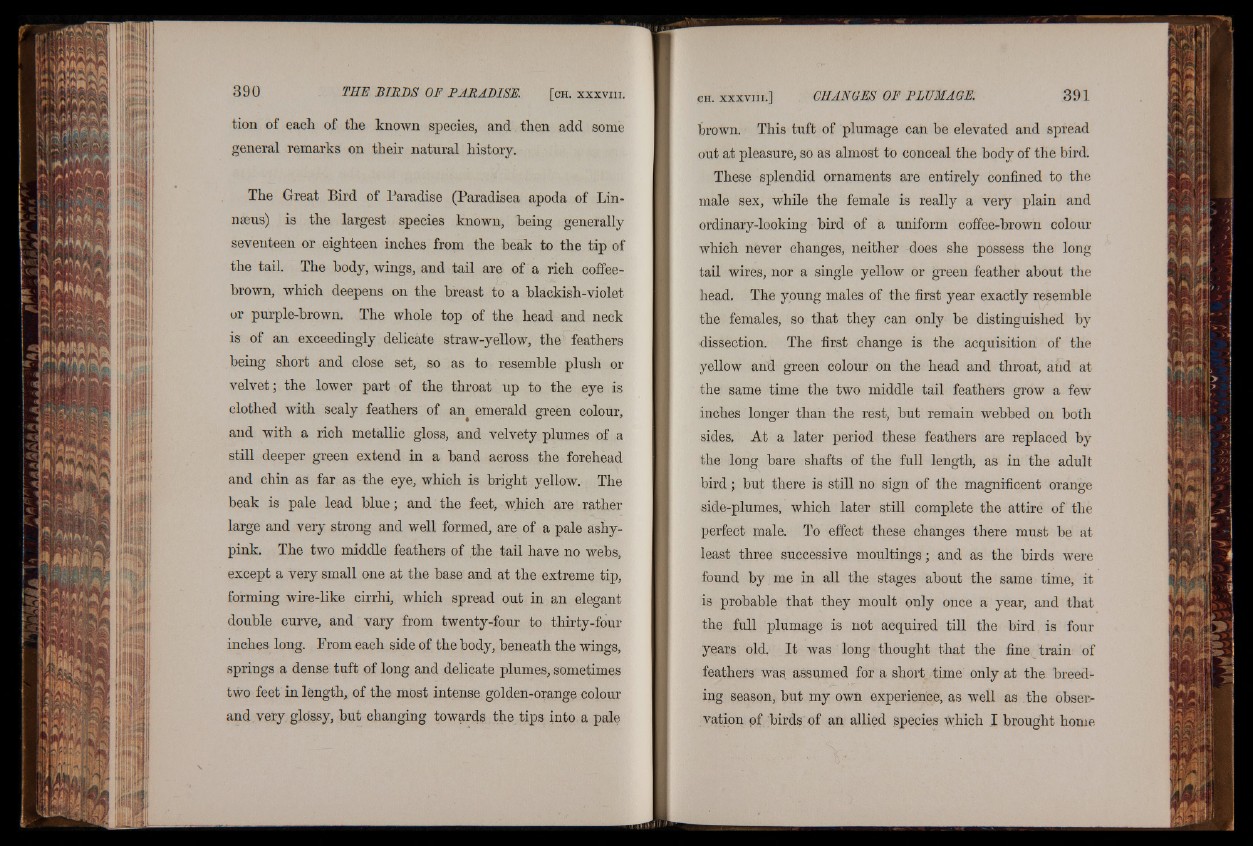
tion of each of the known species, and then add some
general remarks on their natural history.
The Great Bird of Paradise (Paradisea apoda of Linnaeus)
is the largest species known, being generally
seventeen or eighteen inches from the beak to the tip of
the tail. The body, wings, and tail are of a rich coffee-
brown, which deepens on the breast to a blackish-violet
or purple-brown. The whole top of the head and neck
is of an exceedingly delicate straw-yellow, the feathers
being short and close set, so as to resemble plush or
velvet; the lower part of the throat up to the eye is
clothed with scaly feathers of an^ emerald green colour,
and with a rich metallic gloss, and velvety plumes of a
still deeper green extend in a band across the forehead
and chin as far as the eye, which is bright yellow. The
beak is pale lead blue; and the feet, which are rather
large and very strong and well formed, are of a pale ashy-
pink. The two middle feathers of the tail have no webs,
except a very small one at the base and at the extreme tip,
forming wire-like cirrhi, which spread out in an elegant
double curve, and vary from twenty-four to thirty-four
inches long. From each side of the body, beneath the wings,
springs a dense tuft of long and delicate plumes, sometimes
two feet in length, of the most intense golden-orange colour
and. very glossy, but changing towards the tips into a pale
brown. This tuft of plumage can be elevated and spread
out at pleasure, so as almost to conceal the body of the bird.
These splendid ornaments are entirely confined to the
male sex, while the female is really a very plain and
ordinary-looking bird of a uniform coffee-brown colour
which never changes, neither does she possess the long
tail wires, nor a single yellow or green feather about the
head. The young males of the first year exactly resemble
the females, so that they can only be distinguished by
dissection. The first change is the acquisition of the
yellow arid green colour on the head and throat, and at
the same time the two middle tail feathers grow a few
inches longer than the rest, but remain webbed on both
sides. At a later period these feathers are replaced by
the long bare shafts of the full length, as in the adult
bird; but there is still no sign of the magnificent orange
side-plumes, which later still complete the attire of the
perfect male. To effect these changes there must be at
least three successive moultings; and as the birds were
found by me in all the stages about the same time, it
is probable that they moult only once a year, and that
the full plumage is not acquired till the bird is four
years old. It was long thought that the fine train of
feathers was assumed for a short time only at the breeding
season, but my owri experience, as well as the observation
of birds of an allied species which I brought home